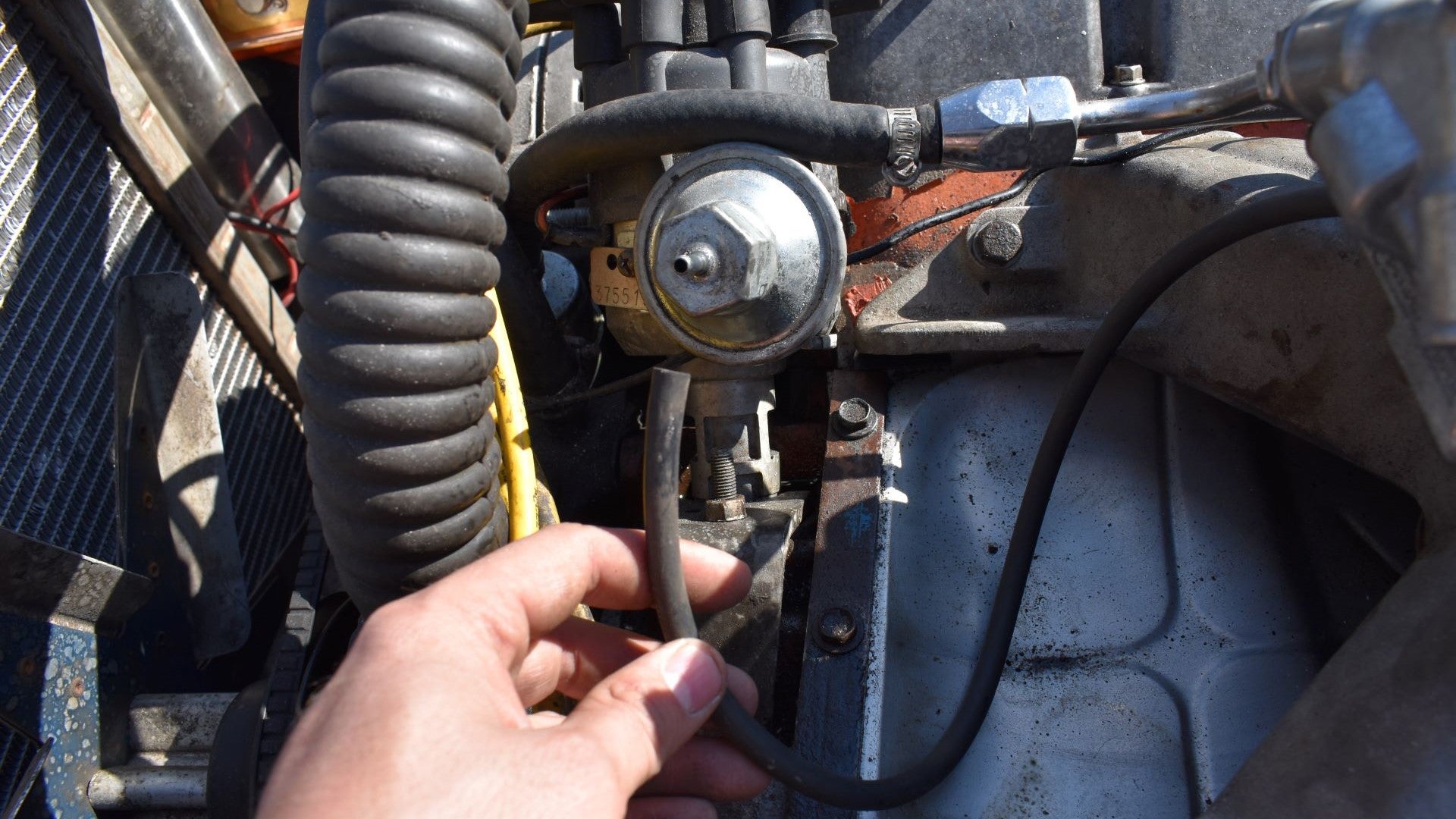Critical Signs of a Blown Head Gasket: What to Watch for in a Used Car

At a Glance: The list of potential hazards to avoid when buying a used car is long, but a blown head gasket is near the top of the list. A blown head gasket is a serious issue that can cost thousands to repair. Watch for white exhaust smoke with a sweet smell, milky oil, bubbles in the coolant system, and external fluid leaks. Spotting these signs before buying a used car can save you from an expensive headache down the road.
Table of Contents
What Is a Head Gasket and Why Is It Important?
The head gasket is a crucial component vital to your engine's proper operation. Sandwiched between the engine block and the cylinder head, the head gasket seals these two major engine components together. When working properly, the gasket ensures the combustion chamber stays air-tight while keeping coolant and oil out of the cylinders.
If left unaddressed, a head gasket leak can cause all sorts of problems, from misfires to overheating and eventually catastrophic engine failure. A failed head gasket can allow coolant into places it shouldn't be, leading to cylinder head damage or even a warped head. More seriously, compression from combustion gases can escape, resulting in low compression and reduced engine performance.
Why You Should Avoid Buying a Car With a Blown Head Gasket

A blown head gasket isn't just an inconvenience—it's a major red flag when considering a used car purchase. Here's why:
- High Cost of Professional Repair: While a replacement gasket itself only costs about $30-$100, the labor costs are substantial. The job requires complete disassembly of the engine's top end, including removing the cylinder head. This can take up to 20 hours on some vehicles. Paying a mechanic to replace a head gasket can cost thousands of dollars—often approaching the value of many used cars themselves.
- Potential for Hidden Damage: By the time a head gasket fails, the engine may have already suffered from overheating. This can warp metal components and cause damage that isn't immediately obvious.
- Risk of Cascading Failures: A blown head gasket often leads to additional problems with the cooling system, water pump, and other critical engine components.
- Previous Owner Negligence: If the previous owner didn't properly maintain the cooling system, it could signal broader maintenance issues throughout the vehicle.
Critical Signs of a Blown Head Gasket

Fortunately, it's relatively easy to detect a blown head gasket if you know what to look for. Here are the tell-tale signs:
1. Sweet-Smelling White Exhaust Smoke
One of the most noticeable signs of a blown head gasket can be seen—and smelled—from the exhaust pipe.
When a head gasket fails
- Coolant can get into the combustion chamber
- As the engine runs, the wayward coolant vaporizes
- The vapor exits the tailpipe in a thick white cloud with a distinctive sweet smell
You'll typically observe this white smoke when you start the engine or during heavy acceleration. Unlike the wisps of water vapor that you might see on a cold day, this vapor lingers in the air and has a tinge of sweetness, which comes from the ethylene glycol found in engine coolant.
Vaporized coolant can also steam-clean the spark plugs, leaving them looking out-of-the-box new. Pulling and inspecting the engine's spark plugs can be a surefire way to diagnose numerous engine issues, including a bad head gasket.
2. Coolant Mixed with Oil: The Dreaded Chocolate Milkshake
The next thing to look for is coolant mixed with the engine oil, which is also easy to spot.
- Just open the oil cap or pull the dipstick
- Healthy engine = Translucent oil that is amber to dark brown in color on the stick
- Head Gasket Failure = Frothy, milky substance resembling a chocolate milkshake on the stick
In such cases, the failure has allowed coolant to seep into the oil passages, mixing the two. This is bad news because coolant-contaminated oil quickly loses its ability to lubricate critical internal components.
Over time, this leads to:
- Increased friction
- Overheating
- Internal parts corroding
3. Bubbles in the Cooling System
Another unmistakable trouble sign is bubbles in the radiator or coolant reservoir. This indicates the head gasket has failed near the combustion chamber, allowing hot combustion gases from ignition to force their way past the breach and into the coolant system.
To check for this:
- Start the engine and let it reach its normal operating temperature
- Open the hood
- Carefully observe the coolant reservoir and the radiator cap
- If you see any bubbling or hear any gurgling in those areas, air bubbles are likely entering the cooling system where they shouldn't be
The presence of air bubbles in the coolant is a serious warning sign that should never be ignored, as it indicates exhaust gases are contaminating your cooling system.

4. External Coolant or Oil Leaks
While the first three signs point to internal breaches, the head gasket can also fail externally, causing visible seepage of oil or coolant (or both) where the engine block meets the cylinder head. Look for areas of wetness or residue along that mid-engine seam.
To get a clear view, you may need to remove some components or examine things from below. A flashlight and mirror may come in handy. Don't forget to check underneath the car for additional evidence in the form of drips or puddles.
Small external leaks aren't cause for immediate alarm.
- However, over time, they can result in a drop in fluid levels, which will eventually lead to engine overheating and damage if left unchecked.
- Worse, they may signal that the head gasket is compromised on the inside too, where the resulting problems are more serious.
5. Failed Compression Test
One of the most definitive ways to diagnose a blown head gasket is through a cylinder compression test. This measures the amount of pressure each cylinder can hold during the compression stroke.
If a cylinder shows significantly lower compression than the others, it could indicate a blown head gasket near that cylinder. Professional mechanics often perform this test when other symptoms point to head gasket issues.
What To Do If You Already Have a Car With a Blown Head Gasket
If you've already purchased a car with a blown head gasket or your current vehicle has developed this problem, you have several options:
DIY Repair
Changing a head gasket is a big job, even for an experienced DIYer. It requires the complete disassembly of the engine's top end, including the removal of the cylinder head. While the replacement gasket itself is relatively inexpensive ($30-$100), the installation can take as much as 20 hours on some vehicles.
If you have the technical skills, proper tools, and patience, this might be worth your time as paying a mechanic to do the work can cost thousands of dollars. For those attempting this complex and intense repair at home, Tinker DIY can offer expert guidance through video consultations, allowing you to get professional advice without ever leaving your garage.
Temporary Fix: Head Gasket Sealers
For a temporary solution, there are commercial head gasket sealers available that can be added to the cooling system. These products can sometimes extend the life of a failing head gasket by sealing small leaks.
However, it's important to understand that these are typically temporary fixes at best and won't resolve major head gasket failures. They're best used as a stopgap measure while you save for proper repairs.
Professional Repair
You can also have the head gasket professionally replaced. While expensive (typically $1,500-$3,000 depending on the vehicle), a professional repair ensures the job is done correctly.
When choosing this option, it's wise to get a second opinion and multiple quotes from reputable mechanics. The high cost makes this repair particularly painful, but it's often worth it for vehicles that are otherwise in good condition or have significant value.
Engine Replacement
In some cases, especially with older vehicles or those that have suffered extensive damage from an overheating engine, it might be more economical to replace the entire engine rather than just the head gasket. While this sounds more extreme, a used or remanufactured engine with a warranty might cost only slightly more than a head gasket replacement on certain vehicles.
Cut Your Losses
Sometimes, the most sensible financial decision is to sell the vehicle "as is" (with full disclosure of the issue) or to scrap it for parts. This is particularly true for older vehicles where the repair costs would exceed the vehicle's value.
Be Confident When Buying a Used Car
Armed with these tips, you can identify a blown head gasket before you purchase a used car, saving you from a complicated repair and a host of related issues, such as overheating and premature engine wear.
Remember that a blown head gasket is more than just an inconvenience—it's a significant mechanical failure that can lead to catastrophic engine damage if left unaddressed. By learning to recognize the symptoms described above, you can make informed decisions about used car purchases and your current vehicle's maintenance needs.
Still have questions about head gasket problems? Speak to one of our Tinker Experts today for personalized advice on your specific situation.
Still have questions? Speak to one of our Tinker Experts today




